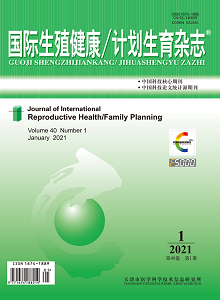Objective: To explore the relationship between the number and grade of transferred embryos in fresh cycle and the pregnancy outcome in assisted reproductive technology.Methods: The clinical data of 1 261 cases of fresh transfer cycles were analyzed retrospectively. According to the number of transferred embryos after age stratification were grouped. In women of <35 years, the group A is single embryo transfer and the group B double embryos transfer. In women of ≥35 years, the group a is single embryo transfer the group b double embryos transfer, and the group c three embryos transfer. In each group, patients were further divided into subgroups according to the number of grade Ⅰ embryos transferred. The group A was divided into the group A0 and the group A1 (the number of gradeⅠembryos transferred was 0 and 1). Similarly, the group B was divided into group B0, B1 and B2. With the same grouping method, patients aged ≥35 years were divided into subgroups (the group a as group a0 and a1; the group b as group b0, b1 and b2; the group c as group c0, c1 and c2). The differences of pregnancy outcome were compared.Results: ①In patients <35 years, the clinical pregnancy rate and implantation rate of group A1 were significantly higher than those of group A0 (both P<0.05). The implantation rate, clinical pregnancy rate, multiple pregnancy rate and live birth rate of group B2 were significantly higher than those of group B0 and B1 (all P<0.05). Meanwhile, the clinical pregnancy rate of group B0 was higher than that of group A0, the implantation rate of group A1 was higher than that of group B1, and the multiple pregnancy rate of group A1 was lower than that of group B1 (all P<0.05). There was no significant difference in other indexes among the groups (all P>0.05). ②In patients aged ≥35 years, the implantation rate, clinical pregnancy rate and live rate of group a1 were significantly higher than those of group a0 (all P<0.05). The clinical pregnancy rate and live birth rate of group b1 and b2 were higher than those of group b0, the implantation rate of group b2 was higher than that of group b0 (all P<0.05). The implantation rate and clinical pregnancy rate of group c2 were significantly higher than those of group c0 and c1. However, the multiple pregnancy rate and live birth rate of group c2 were higher than those in group c0 (P<0.05). Meanwhile, the multiple pregnancy rate of group c2 was significantly higher than that of group b2 (P<0.05). There was no significant difference in other indexes between the groups (P>0.05).Conclusions: In the fresh embryo transfer cycles, the individualized embryo transfer program should be implemented according to the number and grade of embryos. It is suggested that no more than 2 embryos and no more than 1 embryo of grade Ⅰ should be transferred in patients of any age. The single embryo transfer can not only ensure the clinical pregnancy rate, but also effectively reduce the multiple pregnancy rate for the patients with conditions.

